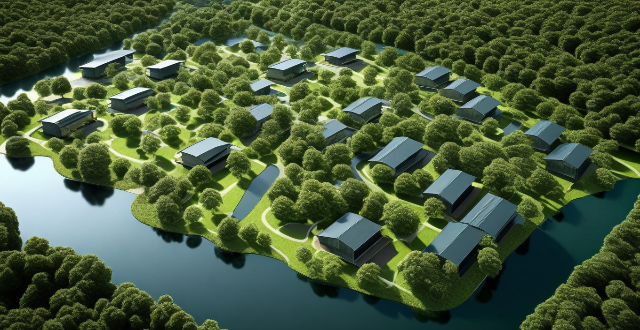Green technology encompasses a wide range of environmentally friendly solutions aimed at reducing waste, conserving resources, and promoting sustainability. These include renewable energy sources like solar and wind power; energy-efficient building designs such as passive solar and green roofs; water conservation technologies like rainwater harvesting and greywater recycling; waste management strategies including composting and recycling; sustainable transportation options like electric vehicles and public transit; agricultural practices such as organic farming and precision agriculture; and environmental monitoring tools that track changes in climate patterns and wildlife habitats.

Examples of Green Technology
Green technology, also known as environmentally friendly or sustainable technology, refers to the use of science and innovation to create solutions that have minimal negative impact on the environment. These technologies aim to reduce waste, conserve resources, and promote a cleaner planet. Here are some examples of green technology:
Renewable Energy Sources
- Solar Power: Harnessing energy from the sun through photovoltaic cells or solar thermal collectors.
- Wind Energy: Utilizing wind turbines to convert wind's kinetic energy into electricity.
- Hydroelectric Power: Generating electricity by harnessing the power of moving water.
- Geothermal Energy: Tapping into the Earth's natural heat for heating and electricity.
- Biomass Energy: Using organic materials like wood chips or agricultural waste to produce energy.
Energy-Efficient Building Design
- Passive Solar Design: Incorporating large windows and strategically placed buildings to maximize natural light and warmth.
- Green Roofs: Installing vegetation on rooftops to provide insulation and absorb rainwater.
- Energy-Efficient Lighting: Using LED bulbs and motion sensors to reduce energy consumption.
- Smart HVAC Systems: Heating, ventilation, and air conditioning systems that optimize energy usage based on occupancy and weather conditions.
Water Conservation Technologies
- Rainwater Harvesting: Collecting rainwater for later use in irrigation or toilet flushing.
- Greywater Recycling: Purifying used water from sinks, showers, and washing machines for non-potable uses.
- Drip Irrigation: Delivering water directly to plant roots with minimal waste through drip tape or sprinklers.
Waste Management and Reduction
- Composting: Diverting organic waste from landfills by breaking it down into nutrient-rich soil.
- Recycling: Processing materials such as paper, plastic, metal, and glass to make new products.
- Upcycling: Transforming waste materials into new products of higher value than the original item.
- Zero Waste Practices: Reducing waste at its source by avoiding single-use items and opting for reusable alternatives.
Sustainable Transportation
- Electric Vehicles (EVs): Cars, buses, and motorcycles powered by electricity rather than fossil fuels.
- Hybrid Vehicles: Combining an internal combustion engine with an electric motor for improved fuel efficiency.
- Public Transit: Encouraging the use of buses, trains, and subways to reduce individual car usage.
- Carpooling and Ridesharing: Sharing rides to decrease the number of vehicles on the road and save fuel.
Agriculture and Farming Practices
- Organic Farming: Cultivating crops without synthetic pesticides or fertilizers, often using natural methods like composting.
- Aquaponics: Combining aquaculture (raising fish) with hydroponics (growing plants in water) in a symbiotic system.
- Permaculture: Designing agricultural landscapes that mimic natural ecosystems for sustainability.
- Precision Farming: Using technology like GPS and drones to optimize seed planting, watering, and harvesting.
Environmental Monitoring and Protection
- Satellite Imagery: Tracking changes in climate patterns, deforestation rates, and pollution levels from space.
- Sensor Networks: Deploying sensors to monitor air quality, noise levels, and other environmental factors in real-time.
- Wildlife Tracking Devices: Using RFID tags or GPS collars to study animal migration patterns and habitats.
- Eco-Friendly Materials Research: Developing biodegradable plastics, non-toxic cleaning products, and other eco-friendly materials.